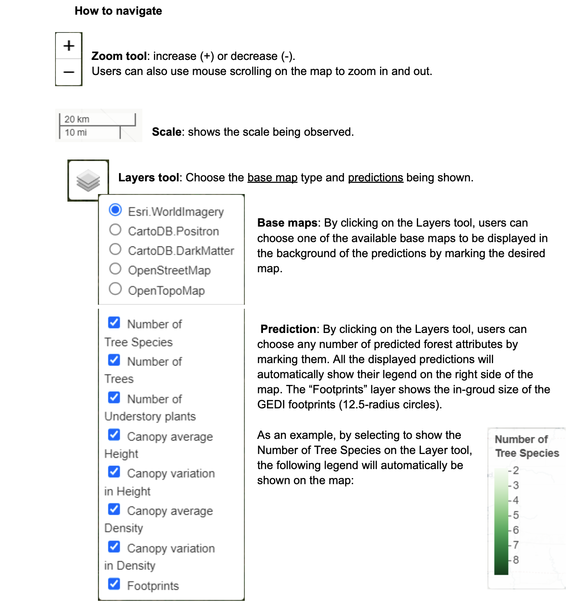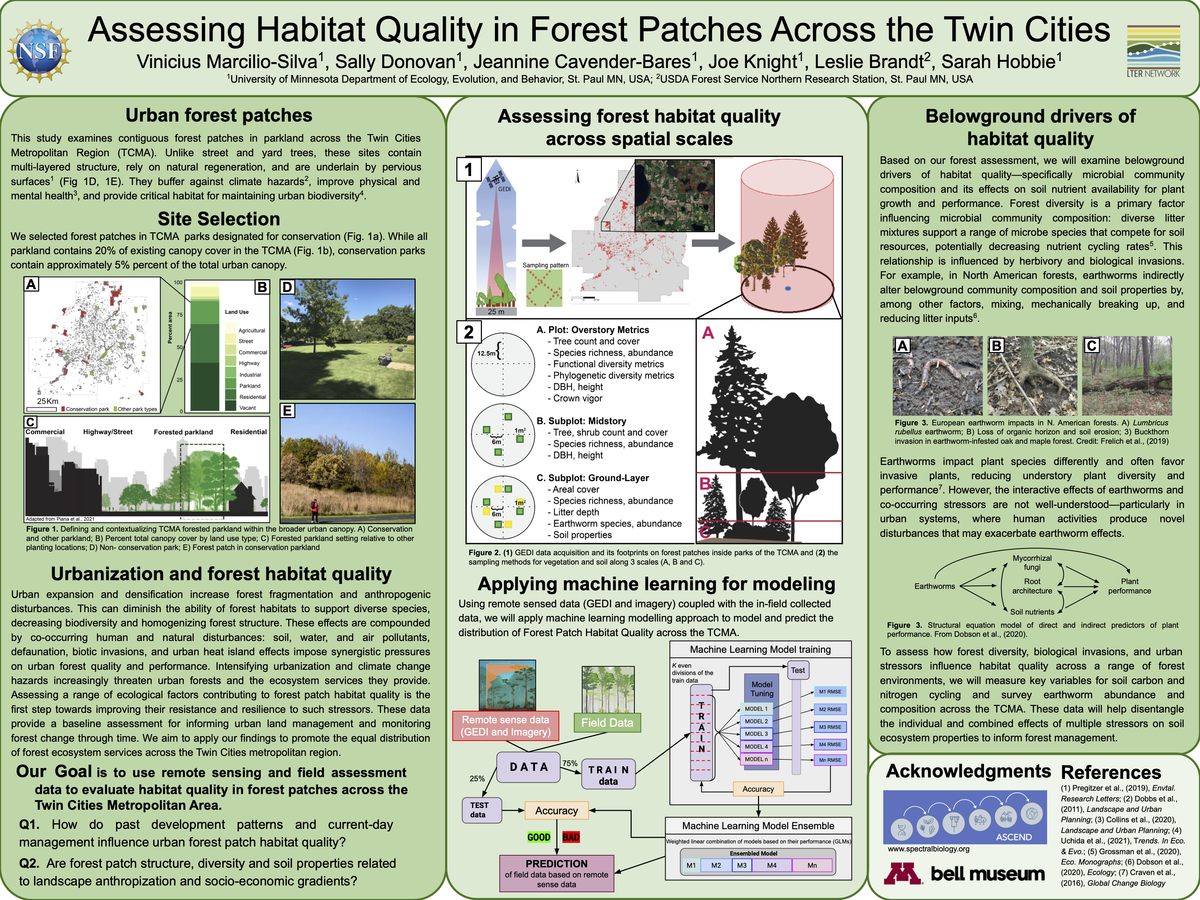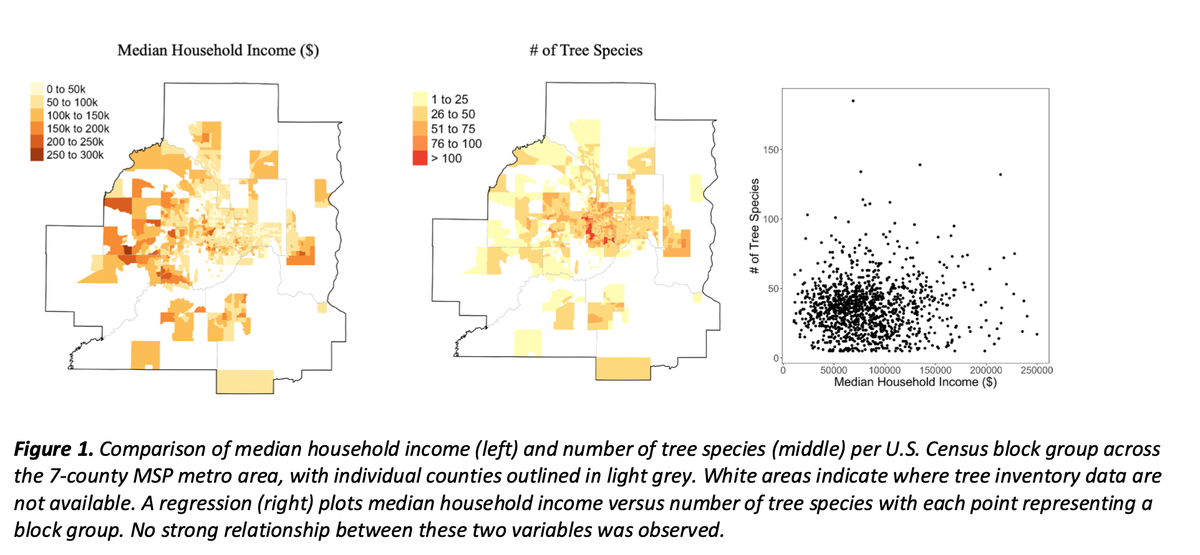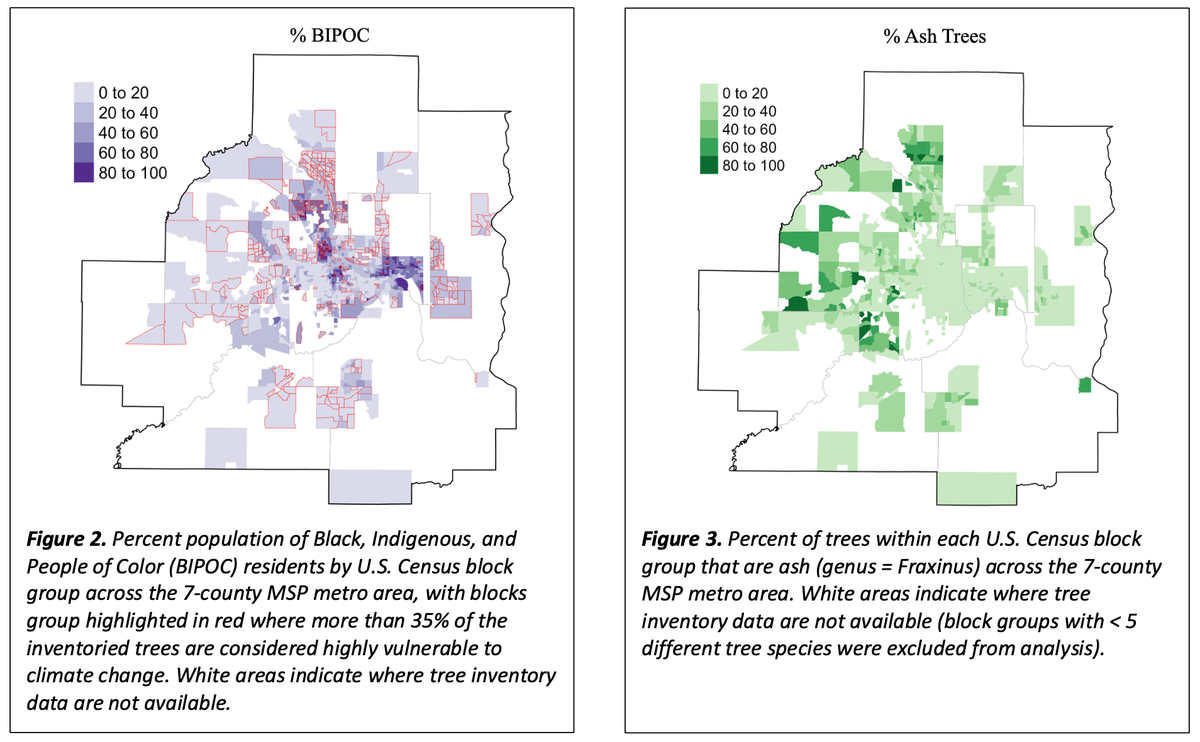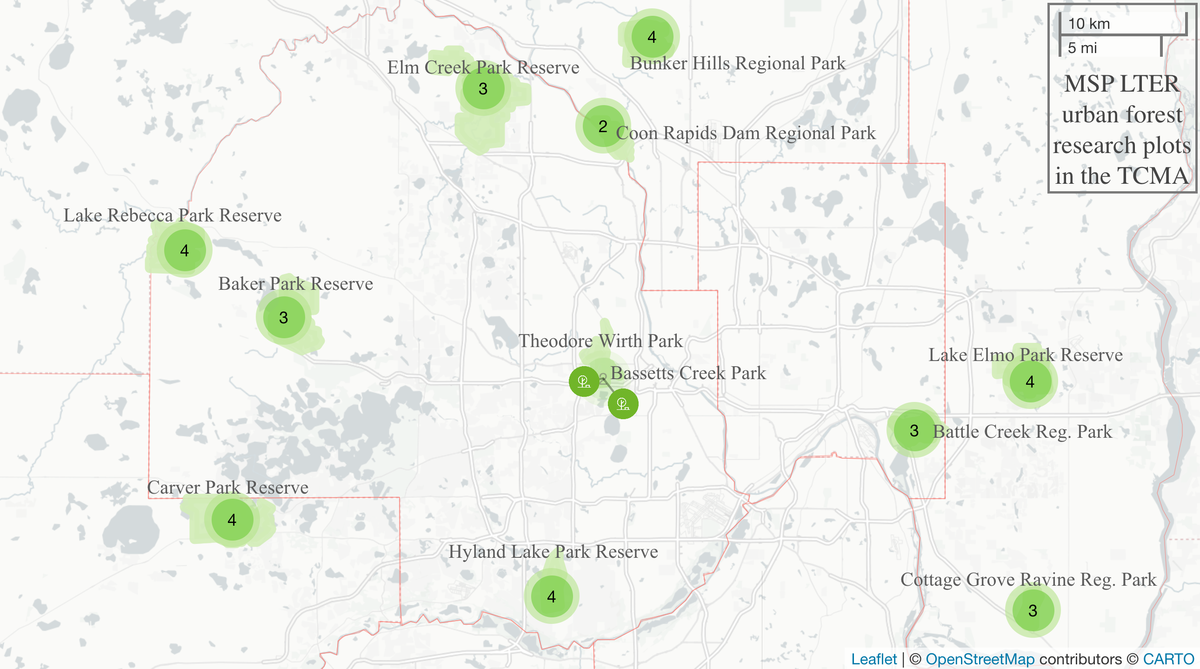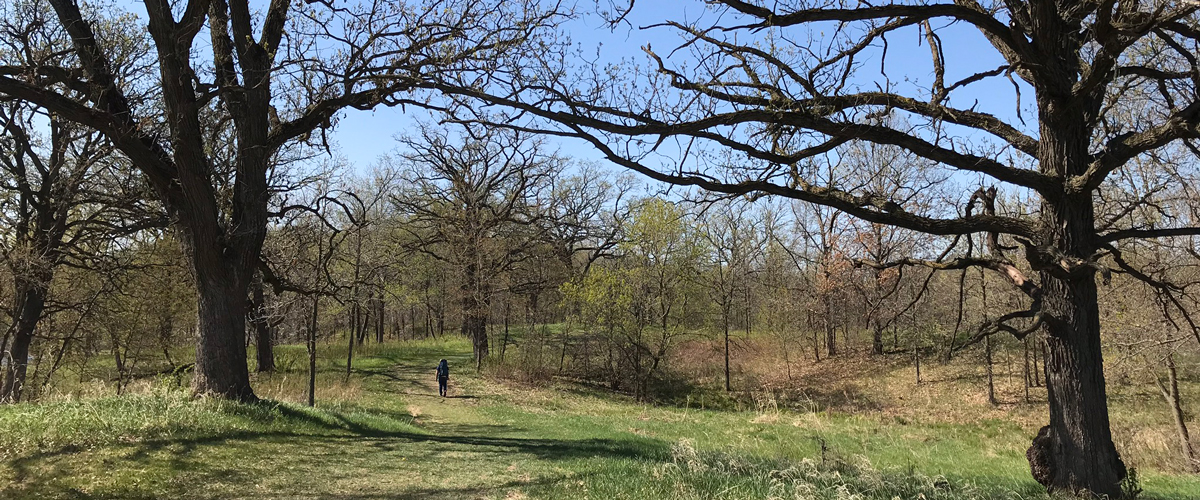
Led by: Leslie Brandt and Jeannine Cavender-Bares
Urban forests provide important benefits to human communities, such as cooling, aesthetics, air quality, support for wildlife, and opportunities for recreation. High tree species diversity is thought to reduce risks of canopy loss and help our tree canopy bounce back after events such as drought, storms, or pest outbreaks. We are investigating how ecological drivers, land management decisions, and socioeconomic factors including systemic racism have influenced canopy diversity and resilience. In addition, we are testing the effectiveness of future-oriented climate adaptation strategies aimed at designing resilient canopies that are able to withstand multiple stressors. These efforts will benefit land managers, urban foresters, and residents in building a more robust urban tree canopy.
MSP urban forest structure and diversity model predictions
We used machine learning ensemble models to integrate data from forest inventories (40 12.5-meter radius plots; Marcilio-Silva et al. 2022), GEDI observations, and Sentinel-2 derived land surface phenology (described in Marcilio-Silva et al. in review). These models enabled accurate predictions of the nine forest attributes presented here: plant diversity (tree species richness, tree abundance, and understory plant abundance), structure (average canopy height, diameter at breast height (DBH), and canopy density), and structural complexity (variability in canopy height, DBH, and canopy density) with relative errors ranging between 11% to 21%. Each point in this map shows the predicted forest attributes based on our models.
